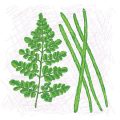The Legacy of Afternoon Tea: A Cultural Overview
In the heart of British culture, afternoon tea stands as a cherished ritual that transcends mere refreshment. Originating in the early 19th century, this tradition is often attributed to Anna, the Duchess of Bedford, who sought a light meal to stave off hunger between lunch and dinner. What began as a personal habit soon blossomed into a widespread social event, shaping the daily rhythms and etiquette of British society. The act of gathering for tea—complete with fine china, delicate pastries, and finger sandwiches—quickly became symbolic of hospitality, refinement, and community. More than just a pause for sustenance, afternoon tea evolved into a cultural cornerstone, representing both the elegance of British heritage and the comfort found in shared moments. Today, while modern lifestyles may alter its form, the essence of afternoon tea remains: a gentle reminder to slow down, connect, and appreciate life’s simple pleasures. This tradition now provides fertile ground for reimagining how beverages can nurture not only social bonds but also holistic well-being.
2. Beyond Black Tea: Understanding Herbal Infusions
While black tea remains a quintessential part of British culture, herbal and botanical drinks are swiftly gaining popularity among health-conscious individuals across the UK. The modern British palate is expanding, embracing infusions not only for their diverse flavours but also for their gentle support to wellbeing. From the comforting warmth of chamomile to the invigorating zest of peppermint, herbal brews now grace afternoon tables alongside traditional blends.
The Allure of Herbal Brews in the UK
Britons are discovering that herbal teas offer more than just a caffeine-free alternative—they present a sensory journey rooted in both tradition and innovation. Cafés and tearooms from London to Edinburgh are featuring bespoke herbal blends, while households experiment with loose leaves and botanicals sourced from local herb gardens or artisanal producers. This shift reflects a broader appreciation for natural remedies and preventive wellness within daily routines.
Western vs Holistic Perspectives on Herbal Infusions
| Western Perspective | Holistic (Eastern) Perspective | |
|---|---|---|
| Primary Focus | Phytochemicals and specific health benefits (e.g., antioxidants, digestion aid) | Balance of body energies (Qi), harmonising mind and body, seasonal alignment |
| Popular Herbs | Peppermint, Chamomile, Elderflower | Ginger, Goji Berry, Chrysanthemum |
| Preparation Method | Steeping dried leaves or flowers in hot water | Bespoke decoctions, blending based on individual constitution and imbalance |
| Purpose | Symptom relief (e.g., calming nerves, soothing digestion) | Preventive care, emotional balance, harmony with nature’s cycles |
The Everyday Ritual Meets Mindful Practice
This fusion of Western and holistic approaches is redefining how Britons enjoy their daily cuppa. Whether it’s a mug of nettle tea to support vitality during chilly seasons or a blend of lavender and rose for emotional ease after a busy day, herbal infusions invite us to pause and reconnect with our bodies. In this way, the humble teapot becomes a vessel for both comfort and conscious self-care—a gentle evolution of British beverage culture rooted in centuries-old wisdom yet ever attuned to modern life.
![]()
3. Traditional Remedies, Modern Applications: A Chinese Medicine Perspective
Chinese medicine holds a rich tradition of herbal teas that nurture both body and mind, emphasising balance, prevention, and gentle harmonisation with nature’s rhythms. Classic blends such as chrysanthemum tea, renowned for its cooling properties and ability to ease tension, or goji berry infusions that gently support vitality and vision, are staples in the Chinese wellness repertoire. Even simple ginger tea is valued for warming the digestive system and dispelling internal chill—a concept akin to the British penchant for a restorative cup on a cold afternoon. Adapting these time-honoured remedies into British drinking habits is not only possible but can be truly delightful. For instance, swapping an afternoon black tea with a soothing chrysanthemum and rose blend offers a caffeine-free way to unwind while supporting eye health after long hours at the screen. Goji berries can be added to classic British fruit teas, lending a sweet, earthy note alongside their revitalising qualities. Ginger root may be paired with local honey and lemon for a warming brew that resonates with traditional British tastes while incorporating the Eastern philosophy of digestive harmony. By thoughtfully integrating these herbal brews into daily rituals—whether elevating afternoon tea or winding down in the evening—Britons can enjoy beverages that nourish both body and spirit, echoing the holistic wisdom of Chinese medicine within the familiar comfort of their own cultural traditions.
4. Pairing British Flavours with Healing Herbs
Honouring British tastes while embracing holistic wellness offers a delightful journey into the world of herbal brews. By thoughtfully pairing familiar local flavours with healing herbs, we can create beverages that nourish both body and mind, in harmony with Chinese medicine principles. Let us explore several seasonal combinations that celebrate the essence of Britain and support wellbeing through every sip.
Classic Combinations for Every Season
| Season | British Flavour | Herbal Partner | Chinese Medicine Benefits |
|---|---|---|---|
| Spring | Elderflower | Chrysanthemum | Cools the liver, clears heat, supports detoxification, calms the spirit |
| Summer | Mint | Lemon Balm (Melissa) | Dispels summer heat, soothes digestion, uplifts mood, refreshes the senses |
| Autumn | Bramley Apple Peel | Licorice Root | Moistens dryness, strengthens Qi, supports lung health during seasonal transitions |
| Winter | Blackberry Leaf | Cinnamon Bark | Warms the meridians, invigorates circulation, protects against cold and dampness |
| All Year | Chamomile | Goji Berry | Nourishes the yin, calms irritability, supports restful sleep and eye health |
A Mindful Approach to Pairing Flavours and Healing Energies
The art of blending local herbs and classic British flavours is rooted in a mindful appreciation of their energetic properties. For instance, mint’s cooling nature harmonises beautifully with lemon balm to soothe irritability and digestive complaints—an ideal summer cooler when temperatures rise. In contrast, warming cinnamon bark paired with blackberry leaf creates a comforting winter infusion that dispels cold from within according to Chinese medicine.
Tips for Blending at Home:
- Choose fresh and organic ingredients whenever possible to maximise vitality.
- Tune into seasonal needs: opt for cooling herbs in summer and warming ones in winter.
- Create your own blends by combining floral notes like elderflower or chamomile with adaptogenic roots such as licorice or goji berry for added balance.
Cultivating Rituals of Connection and Wellness
Sipping these thoughtfully crafted brews becomes more than a daily ritual—it’s an invitation to attune ourselves to nature’s rhythms and our own inner landscape. By honouring both British heritage and ancient wisdom, we nurture resilience, serenity, and holistic health in every cup.
5. Mindful Tea Rituals for Everyday Balance
In the heart of British tradition, tea is more than a beverage—it is a daily ritual that invites moments of stillness and connection. Reimagining this custom through a holistic lens, we can transform our tea routines into mindful practices that nurture both body and spirit. The art of preparing and enjoying tea mindfully allows us to step away from the rush of modern life, returning to a state of inner balance much cherished in both Eastern and Western wellness philosophies.
Embracing Stillness with Every Sip
Begin your mindful tea ritual by setting aside dedicated time—perhaps mid-afternoon or early evening—to create a sanctuary for relaxation. As you boil the kettle and select your brew, focus on the sensory experience: the gentle sound of water bubbling, the aroma of loose leaves or herbal blends, and the warmth radiating from your cup. Let each action become deliberate and unhurried, encouraging your mind to settle in the present moment.
The Healing Power of Herbal Infusions
Consider incorporating traditional British herbs such as chamomile, elderflower, or lemon balm into your repertoire. These gentle botanicals not only soothe the senses but are also revered in both folk medicine and Chinese herbalism for their calming properties. When you sip these infusions slowly, imagine their healing essence harmonising your qi—the vital energy that sustains well-being—helping to ease tension and restore equilibrium.
Cultivating Balance for Body and Spirit
As you enjoy your tea, practice mindful breathing: inhale deeply, savouring the fragrance; exhale gently, releasing stress with every breath. This simple act links body and spirit, echoing the Taoist principle of harmony within oneself and with nature. Whether alone or shared with loved ones, such rituals encourage reflection and gratitude—key ingredients for holistic health.
By weaving mindful tea practices into everyday life, you honour both British heritage and the wisdom of Eastern traditions. In doing so, even a humble cup becomes an invitation to slow down, reconnect, and cultivate lasting balance—one sip at a time.
6. Bridging Tradition and Innovation: The Future of British Beverages
As we reflect on the vibrant journey from classic afternoon tea rituals to the rising popularity of herbal infusions, the future of British beverages offers a unique opportunity to blend cherished traditions with innovative wellness approaches. British culture has long celebrated the art of drinking—whether it is the ritualistic comfort of black tea served with scones or the convivial warmth of sharing a pot with friends. Now, as health and well-being become increasingly central to our lives, there is space to harmonise these customs with the wisdom of both Eastern and Western practices.
By integrating time-honoured British ingredients—such as mint, elderflower, and rosehip—with herbs like ginseng, goji berry, or chrysanthemum from Traditional Chinese Medicine (TCM), a new era of mindful sipping can emerge. This fusion encourages us to see our daily cuppa not just as a social pleasure but also as an act of self-care. For example, blending green tea with nettle or adding warming ginger to chamomile can offer both flavour and holistic benefits, supporting digestion and emotional balance in line with TCM principles.
The key lies in respecting tradition while welcoming innovation. Local cafes and households alike can experiment with seasonal herbal blends, drawing inspiration from both British gardens and ancient apothecaries. Afternoon tea need not lose its elegance; rather, it can be reimagined—think gluten-free oatcakes paired with infusions that calm the mind or invigorate the spirit. This approach honours the British appreciation for ceremony while gently nudging habits towards greater wellness.
As more people seek natural ways to support their health, embracing this East-West synergy allows British beverage culture to stay relevant and rejuvenating. The simple act of pausing for tea transforms into a moment for mindfulness—a chance to check in with body and soul, whether you are brewing an aromatic Earl Grey or a cup of restorative astragalus root.
Ultimately, by bridging old and new, Britain can foster a beverage culture that is not only steeped in history but also alive with possibility—one where every cup becomes an invitation to nourish both community and well-being.


